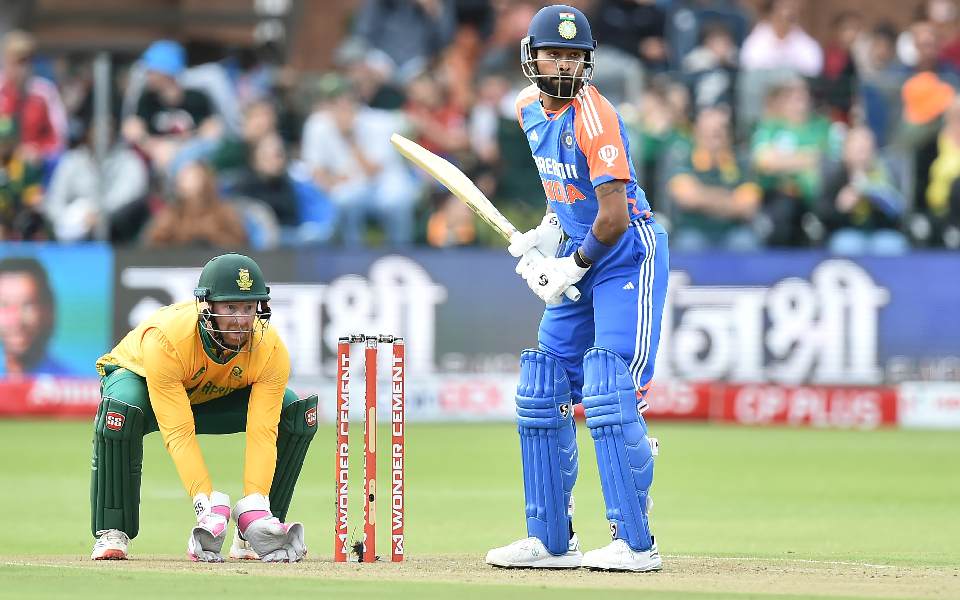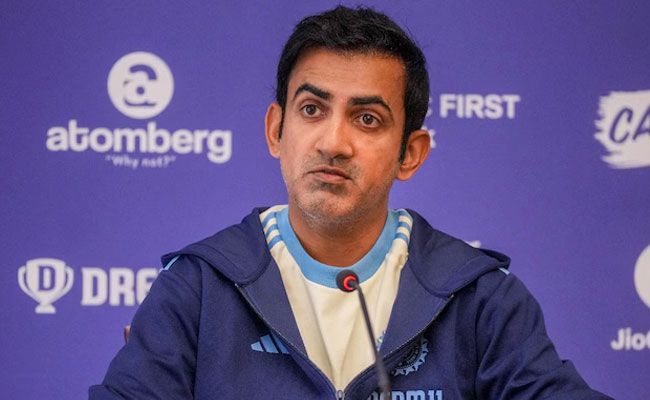Gqeberha, Nov 10: Indian top-order suffered a collective meltdown against disciplined South African bowlers on a bouncy pitch, managing a way below par 124 for six in the second T20I here on Sunday.
SA skipper Aiden Markram had little hesitation in selecting to bowl once he won the toss, and the bowlers vindicated his call with a stellar effort.
The Proteas bowlers hit the back of length line and the natural bounce on the pitch did the rest. Abhishek Sharma’s dismissal was an example for this.
The left-hander’s underwhelming outings in T20Is continued as his miscued pull off a climbing delivery from Gerald Coetzee ended in the hands of Marco Jansen, who made the first strike dismissing Sanju Samson (0, 3b).
Samson, who had become the first Indian batsman to score back-to-back T20I hundreds, gave himself space to heave Jansen over mid-off, but the opener paid a heavy price for needless pre-meditation to get bowled.
Jansen started off with a wicket maiden and the rest of the SA bowlers hardly offered any freebies for Indian batters to shake off the pressure.
Skipper Suryakumar Yadav, who shuffled across a tad too much, missed a fuller delivery from Andile Simelane to get trapped in front of the stumps, and it was the pacer’s maiden international wicket.
India ended the Power Play segment on a poor 34 for three.
Axar Patel (27, 21b), who was moved up the order played a couple of delectable shots including a punch through the covers off Keshav Maharaj for a four, was India’s most assured batter on the night.
But the left-hander backed up a bit too far as Hardik Pandya’s straight drive took a deflection off spinner Peter Nqabayomzi’s hand before rattling the stumps. Axar did not even wait for the review to walk away from the field.
In the interim, India went through a boundary-less period between the 10th and 16th over, which was ended when Arshdeep Singh mowed leg-spinner Peter for a six.
Even an accomplished hitter like Hardik Pandya (39, 45 balls), who found some late steam, had to wait till his 28th delivery to find a boundary, underscoring India's struggles on the night.
Let the Truth be known. If you read VB and like VB, please be a VB Supporter and Help us deliver the Truth to one and all.
Latur (PTI): A minor girl was allegedly kidnapped and raped by an 18-year-old man in Latur, leading to the arrest of the main accused and owners of two cafes where the crime occurred on December 4, police said on Saturday.
Police traced the girl within hours of registering the complaint. The accused, identified as Rihan Gulab Shaikh, was arrested based on the girl's complaint. Two others are owners of two cafes where the crime occurred, police said.
Police registered a case under various sections of the Bharatiya Nyay Sanhita (BNS), POCSO Act, and the Prevention of Atrocities Act, an official said.





